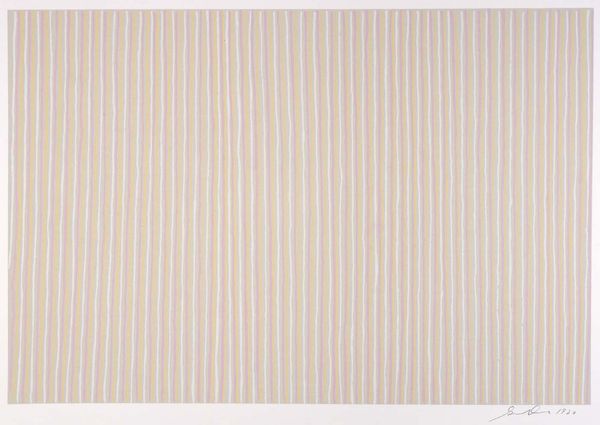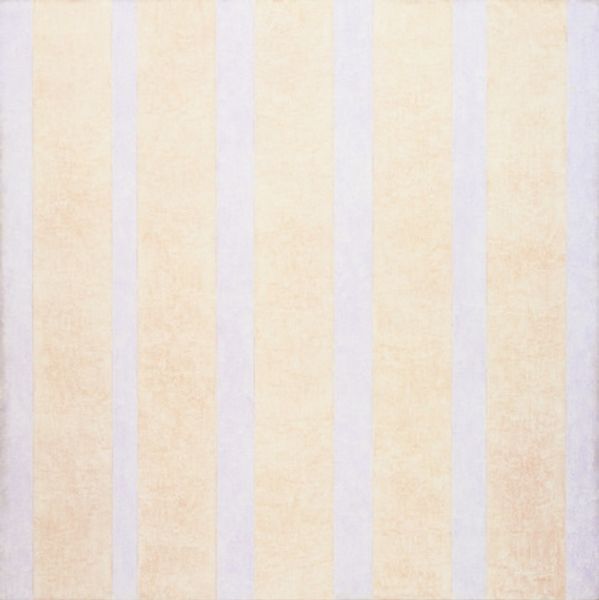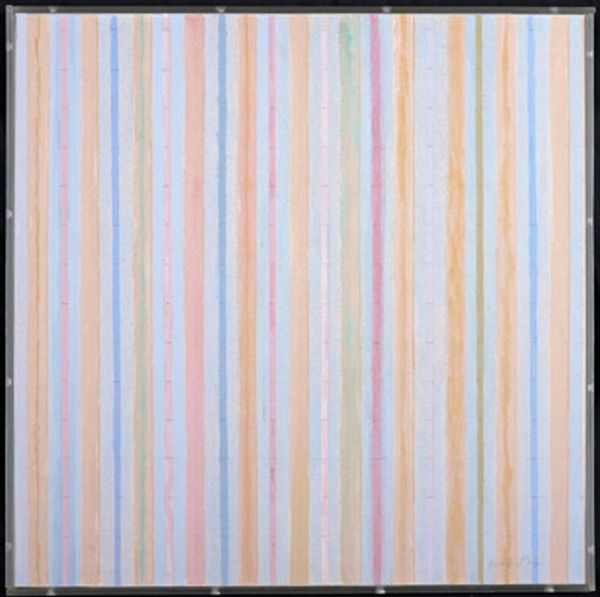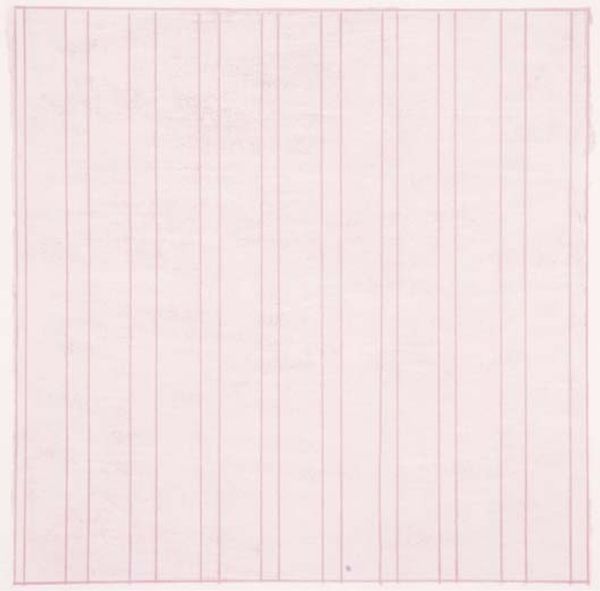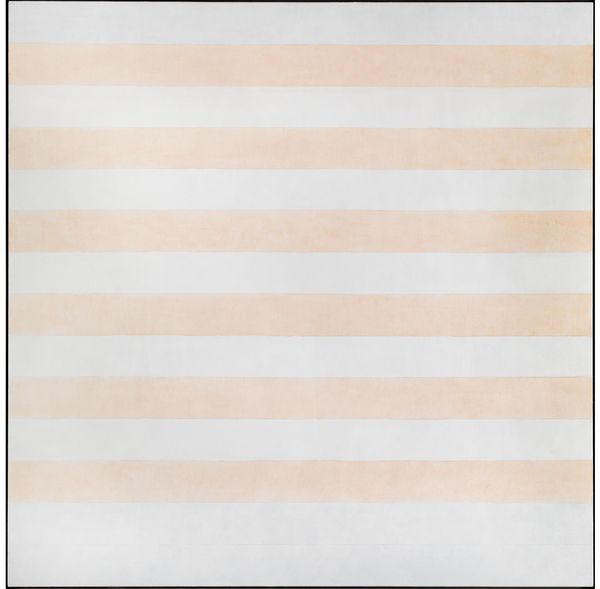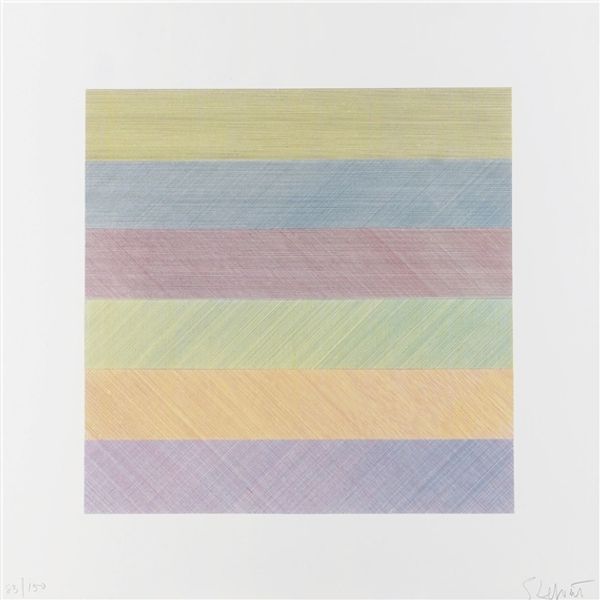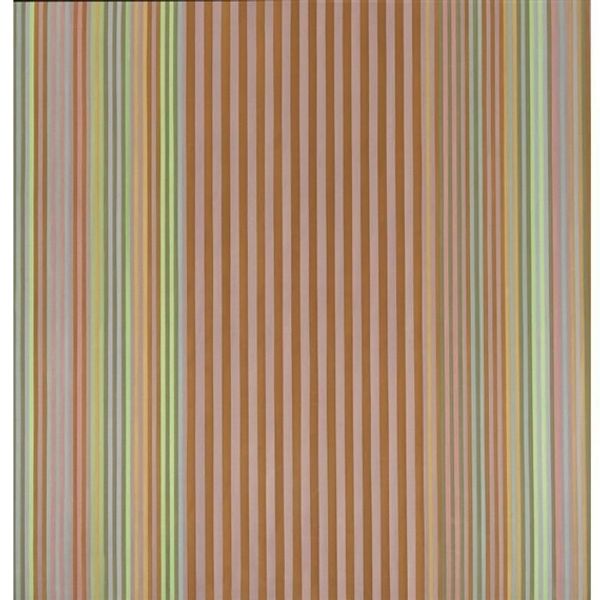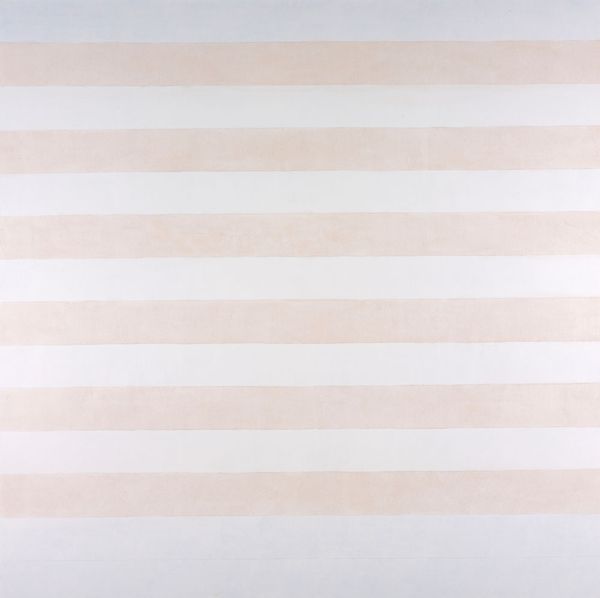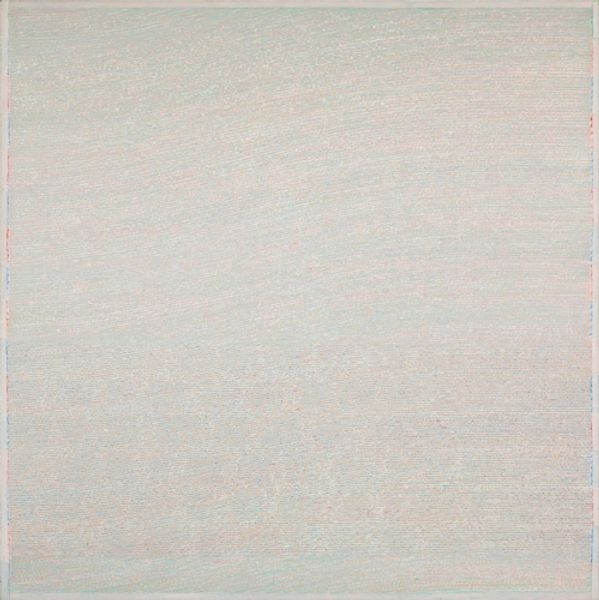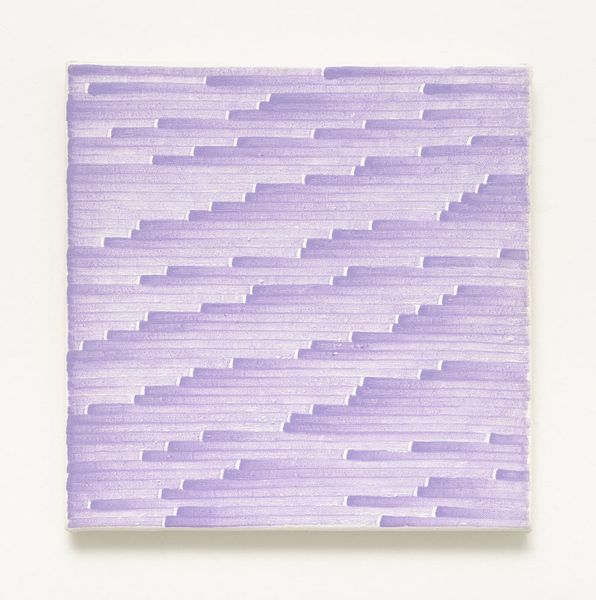
painting, acrylic-paint, ink
#
painting
#
minimalism
#
acrylic-paint
#
ink
#
geometric
#
abstraction
#
line
#
modernism
Copyright: Agnes Martin,Fair Use
Curator: Agnes Martin's "Untitled #13" from 1975 offers us a profound example of her minimalist aesthetic using acrylic and ink on canvas. Editor: My initial reaction is serenity. The subtle interplay of vertical lines, the gentle blush tones, creates a sense of tranquility that's almost meditative. It's more of a feeling than an image. Curator: Absolutely. Martin's work arose within a very specific art world context. Think about the male-dominated abstract expressionist movement and the shift toward minimalism and the reactions against the commodification of art. Martin’s almost ethereal compositions were radical interventions. Editor: Agreed, but the beauty is truly in the meticulous execution of these delicate lines and color washes. See how each stripe isn’t quite uniform, giving it a handmade quality. What looks simple requires the utmost discipline. Curator: The repetition is crucial; the grid motif in her work rejects the ego-driven expression found in art prior. It opens questions about gender, emotion, and artistic intention. It also invites interpretations within social and political upheavals that impacted gender perceptions and creative expressions. Editor: Semiotically speaking, we must think about line and color theory here. These near-identical lines don't "point" toward a concrete, external thing. Rather, they turn inward, directing one's awareness to the painting as an object of pure sensation. It almost erases its physicality despite being such a large work. Curator: Which relates directly back to what it attempts to mean for art history and the gallery that houses this piece. It presents an emotional presence through depersonalization. The piece seems less about being looked *at* and more about being absorbed. Editor: A thought-provoking and lovely insight; I hadn’t considered its specific relationship to emotional expression and the art-viewing context, thank you. Curator: It all shows just how one artist and artwork changed everything.
Comments
No comments
Be the first to comment and join the conversation on the ultimate creative platform.
